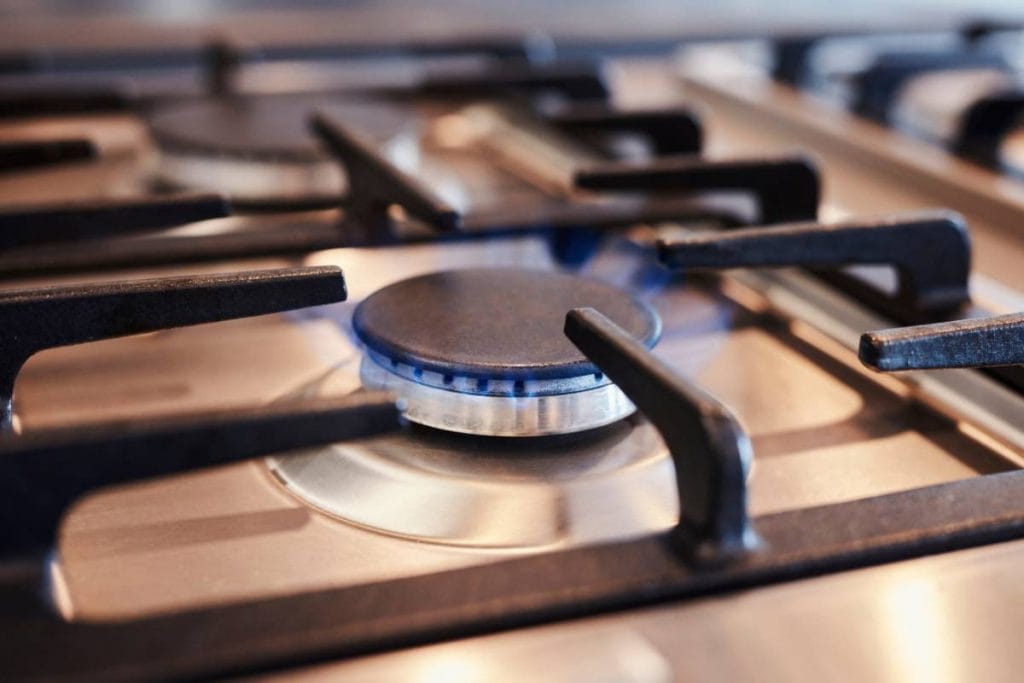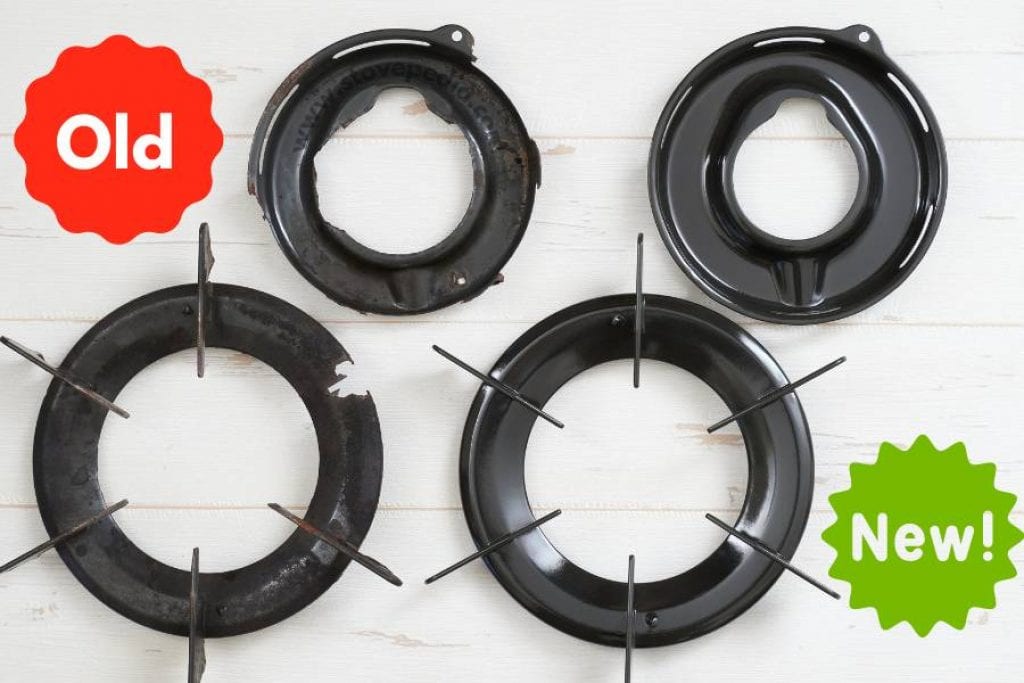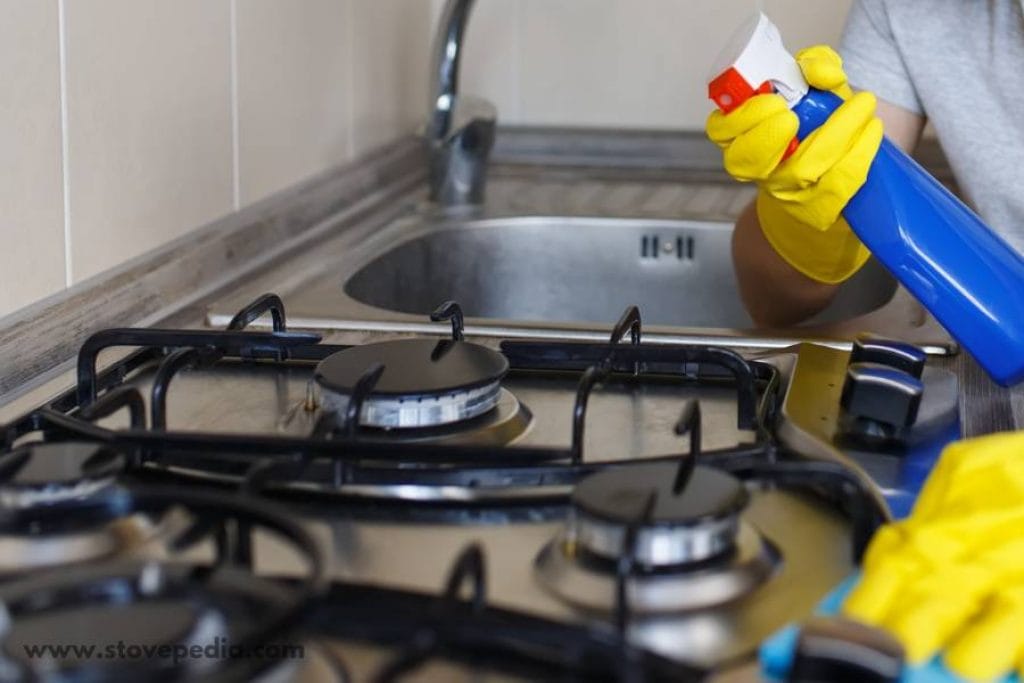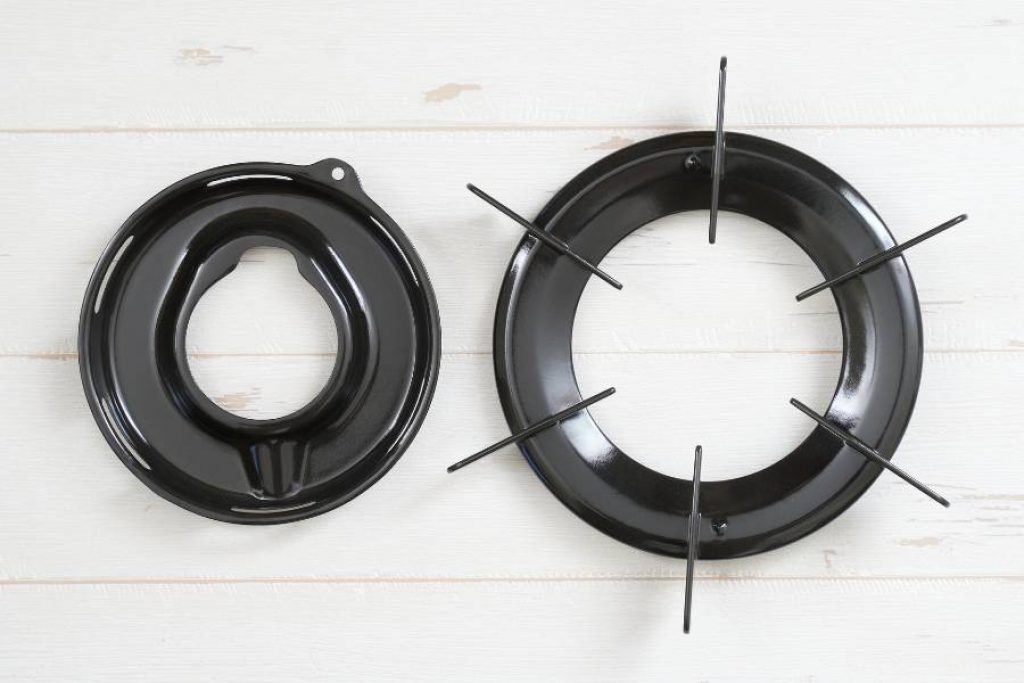You must have noticed the metal frames on the gas burners that hold your pans and pots in place. These are called ‘grates’ of the gas stove that function as pan supports. Clean and hygienic grates can make a difference in the quality of time you spend in your kitchen.
The grates on your gas stove go a long way in crafting a pleasant cooking experience. Wearing the hat of a chef for more than a decade or so, I have found these accessories to be immensely beneficial.
Beyond the safety perspective, you need good quality grates to ensure that your cookware get adequate exposure to heat besides keeping them stable. This explains why most households prefer strong and sturdy gas stove grates.
Given that keeping your grates happens to be a priority, make sure to clean every spill or stain immediately. To help you out with more details on maintaining your grates, I have come up with this post.
Read on to know the common materials used to manufacture gas stove grates, whether or not you can replace them, and how you can keep the pan supports clean. Lastly, I have discussed how you can keep your grates free from rust and properly functioning.

What Are Gas Stove Grates Made Of?
Reputed gas stove grate manufacturers use cast iron, stainless steel, wrought iron, and aluminum to make these accessories. Let’s take a deeper look into each of these materials.
Cast Iron Grates
Gas stove grates or pan supports made of cast iron are known for their significant heat retention capacity. Usually, you can use these grates along with an enamel or porcelain coating. Reputed manufacturers provide these coatings to secure the metal accessories from rusting. When you use cast iron grates with porcelain or enamel coating, you won’t require any seasoning.
I would recommend you to choose coated cast iron grates for gas stoves, considering that the uncoated ones are corrosive and porous. However, they need lower maintenance compared to the coated ones. Once you prepare your food, you need to brush the metal surface more to eliminate the food residue.
One of the downsides of using coated grates is that, the coating is more susceptible to cracking in case you accidentally chip or drop them. Over time, you would notice rust forming in the cracks, and eventually deteriorate the quality of cooking.
On the positive side, you would be able to retain the characteristic flavor of grilled food when you use uncoated cast iron grates. The food won’t stick to the surface, and these materials can endure high heat.
Advantages
- Creates high heat and retains the same for a longer duration.
- Cast iron pan supports are durable and cost-effective.
- With proper maintenance, they can last pretty long.
- Grilling food on cast iron grates ensures that you would love the flavor.
Disadvantages
- Uncoated cast iron grates are susceptible to rust.
- Over time, they tend to wear out unless you maintain it properly.
- You need to invest time in frequent seasoning and maintenance.
Stainless Steel Grates
Thanks to their durability and heat-retention capacity, stainless steel gas stove pan supports have made their way to thousands of households. Currently, you will find stainless steel grates widely available in the market.
When you consider the functional value of this material, stainless steel gets straight to the point. In terms of longevity, they tend to outlast cast iron grates in some cases. Although they lack character, stainless steel grates tend to be resistant to harsh weather conditions. So, you can use them in outdoor conditions under rain, sun, or salt.
Coming to cleaning and maintenance, stainless steel gas stove grates tend to trouble the users less. However, they tend to lose their shine on consistent use. The material is quite inexpensive, and serves the purpose well. Being a grilling enthusiast, I enjoy cooking on stainless steel gas stove grates.
Advantages
- The heat-producing and retaining capacity of stainless steel gas stove grates is impressive.
- Stainless steel pan supports are most durable among all variants.
- In most cases, you can use these grates for a lifetime with proper maintenance.
- Most importantly, as the name suggests, these grates remain rust-free.
Disadvantages
- Compared to cast iron grates, the heat retention capacity is low.
- Over time, they tend to discolor and become black.
- Using a lower-grade grate is not recommended, as it can develop rust.
Wrought Iron Grates
Although wrought iron happens to be a great material to produce forged items, I wouldn’t recommend forged iron gas stove grates. Despite being strong, the material fails to bear intense heat. Also, they are not capable of handling loads, which implies that the lifespan of your grates would be lower when you choose the wrought iron ones.
Compared to stainless steel, wrought iron is not that durable. From my experience, I do not recommend using gas stove grates made of wrought iron. Compared to cast iron and stainless steel gas grates, the wrought iron ones falter when it comes to heating and heat retention. Besides, an uncoated surface can easily rust.
Advantages
- Wrought iron gas stove grates are relatively strong.
- The material carries a high tensile strength.
- Due to excellent weldability, they can be used to make customized pan supports.
Disadvantages
- These grates fail to bear heavy loads on pots or pans.
- The heat retention capacity is not too good.
- They tend to rust on exposure to water.

Can You Replace The Grates On Your Gas Stove?
With proper care and maintenance, you can make your gas stove grates last up to two decades or even more. However, it’s easy to get them replaced if the old ones are tarnishing the looks of your modern kitchen.
Replacement grates are available in the market. You can make the purchase online or from the local store, simply by choosing the right size of these pan support grates.
Old and dirty grates often result in orange, yellow, or blue flames on your gas stove depending on the temperature. So, if this issue persists, and you know that your grates are more than a decade old, it’s time to get them replaced.
How To Clean Gas Stove Grates?
Your gas stove grates remain exposed to oil, residue of food, grime, and dirt. Unless you maintain these accessories by ensuring proper cleaning, you are robbing them of their lifeline.
In case you have a porcelain-coated cast iron gas stove grate, make sure not to clean it with ammonia. You need to take adequate precautions while handling cast iron grates. Harsh chemicals can affect the coating, so make sure to clean the grates without ammonia.
In this section, I have recommended a few effective ways to clean your gas stove grates.
Cleaning Grates Using Baking Soda
- Pour three tablespoons of baking soda into a bowl and the same quantity of cold water. Prepare a paste by mixing it in the bowl.
- Now put on a pair of gloves and spread the paste over the grates evenly. Let this coating settle for 20 minutes.
- Use a bristled scrubbing brush to loosen the dirt on the metal surface.
- Now use a piece of cloth to rinse the metal with cold water. This will remove the excess residue.
- Use a dish towel to dry the metal surface completely. Lastly, put the grates on the stovetop.
Cleaning Grates Using Liquid Dishwashing Soap
- Firstly, remove the gas stove grates and place them on a sink having an open drain.
- Now, pour boiling water on the pan supports so that the dirt and debris become loose.
- Apply liquid dish soap on the metal surface and use hot water to rinse it.
- Let the grates soak in this solution for 15 minutes. Make sure that each side of the grates soak enough soap.
- Use a sponge or brush to rinse the surface and remove the dirt. For the last wipe, use a microfiber cloth.
- Make sure to dry the grates completely using a dish towel. Lastly, place the grates on the top of the burners, irrespective of the type you have.
Cleaning Grates Using A Commercial Degreaser
- A powerful commercial degreaser like Pidilite WD-40 can help you clean your stovetops and burners. Apply them on the grates and leave them for half an hour.
- Use a scrubbing sponge or brush to dislodge the debris and dirt from the metal surface.
- You may have to repeat this process multiple times.
- Use a damp microfiber cloth to wipe off the metal.
The above methods are good for deep cleaning which we recommend doing once a week or so. But what about keeping the grates clean daily? Here are our top tips.

Tips For Cleaning Gas Stove Grates On A Daily Basis
Now that you are aware of the popular cleaning agents, I will recommend you a few more tips to clean the grates with vinegar.
- Use distilled water and white vinegar to prepare a 1:1 ratio. Pour it into a spray bottle and add some essential oils to the solution. This would produce a nice scent. How spray this on the grates and let them soak for 15 minutes. Next, clean the surface using a damp, clean piece of cloth.
- In case you have split food onto the metal grates, don’t delay to wipe them off. When the food hardens, it would be challenging to remove the spots.
- Try to keep the grates and spill trays dry during cooking. When you prepare the dishes, they tend to become damp. So, when you finish cooking, use a dry piece of cloth to wipe the grates and trays.
- In case the split food hardens on the grates, try not to remove it using your fingers. Rather, a scrubby brush would help in these cases.
- You can also use a baking soda or salt solution to clean nasty food or beverage spills on the gas stove grates in your kitchen.
- Cleaning glass top gas stoves and their grates should be done carefully. This is because glass tops are delicate and can get damaged with abrasive chemicals.
Can You Clean Grates In A Dishwasher Machine?
Coated and anodized utensils are incompatible to clean in a dishwasher because the coating tends to peel of by the application of heat and cleaning agents. So, you should not attempt to clean porcelain-coated grates inside the dishwasher. But, you can clean stainless steel and normal cast iron grates without any problem. Also, it is always advisable to go through the user manual. Using a dishwasher is one of the fastest and easiest ways to clean gas stove grates.

How To Keep Grates Rust-free And Black?
Exposure to grease and grime can lead to the development of rust on your gas stove grates. To keep your pan supports free from rust, I would recommend you to clean the surface regularly in the first place.
After you clean the grates, use a little olive oil or palm oil to coat the grates. This should keep away moisture from affecting the metal grates.
However, the most effective way to keep your grates black and rust-free is to season them. For seasoning these pan supports, you would need a heat source, grease or fat, and a stiff plastic brush.
- Firstly, use the stiff brush to remove dirt from the grates. Proper seasoning requires you to have clean metal surfaces.
- Choose a fat of your choice (grease, bacon, oil, or lard) and cover the metal surface.
- For the next 45 minutes, bake the coated burner at 176°C.
- When the grate cools down, apply the fat layer once again.
- For another 45 minutes, bake it at 232°C.
- You need to repeat the process several times and ultimately, the sticky or gummy substances would go away.
This way, you can prolong the longevity of your gas stove grates by keeping them rust-free.
In Conclusion
Being a part of the food and beverage industry, I have extensively used all types of grates in different commercial settings over the years. From my experience, I would recommend you to choose cast iron or stainless steel grates for your gas stove. It’s easy to clean and maintain both these materials, and you will find my guidelines helpful.
Make sure to season your gas stove grates in case you use them regularly. Well, seasoning can be a messy process, so you may look out for professional services. With proper care and maintenance, you can prolong the durability of branded gas stove grates. Check out the best pan support grates online and choose from a reputed manufacturer.


Thank you for your informative guide.
How do you take rust off the grates? (Rust developed when tenants were in the property) when the rest of the hob is perfectly acceptable, with a few minor paint imperfections.
It’s a hob that’s been in place 9 years, so there should be plenty of life left.
Thank you in advance for your reply.
Hello and thank you for your positive feedback on our guide!
Dealing with rust on your gas stove grates is a common issue, especially in well-used appliances. Fortunately, there are several effective ways to remove rust and restore the appearance of your grates. Here are some steps you can take:
Vinegar and Baking Soda Method:
1. Remove the grates from the stove.
2. Mix equal parts of vinegar and baking soda to create a paste.
3. Apply the paste to the rusted areas and let it sit for at least 30 minutes.
4. Scrub the grates with a brush or sponge to remove the rust.
5. Rinse thoroughly with water and dry the grates completely.
Citrus and Salt Method:
1. Cut a citrus fruit (like a lemon or lime) in half.
2. Sprinkle salt over the rusted areas.
3. Use the citrus fruit as a scrubber, applying pressure to lift the rust.
4. Rinse and dry the grates after cleaning.
Commercial Rust Removers:
1. Purchase a commercial rust remover from a hardware store.
2. Follow the product’s instructions for application.
3. Usually, these products involve applying the solution, letting it sit, and then scrubbing or wiping away the rust.
Steel Wool or a Wire Brush Method:
1. For stubborn rust, you can use steel wool or a wire brush to scrub the grates.
2. Make sure to remove any loose rust particles afterward.
After cleaning, it’s essential to season the grates to prevent future rusting. You can do this by lightly coating them with vegetable oil and heating them on a low flame for about 30 minutes.
Remember, safety first: Ensure the stove is turned off, and the grates are cool before attempting to clean or remove rust. If the rust is extensive or the grates are severely damaged, you might consider replacing them for optimal performance and aesthetics.
I hope these suggestions help restore your gas stove grates. If you have any further questions or concerns, feel free to ask!